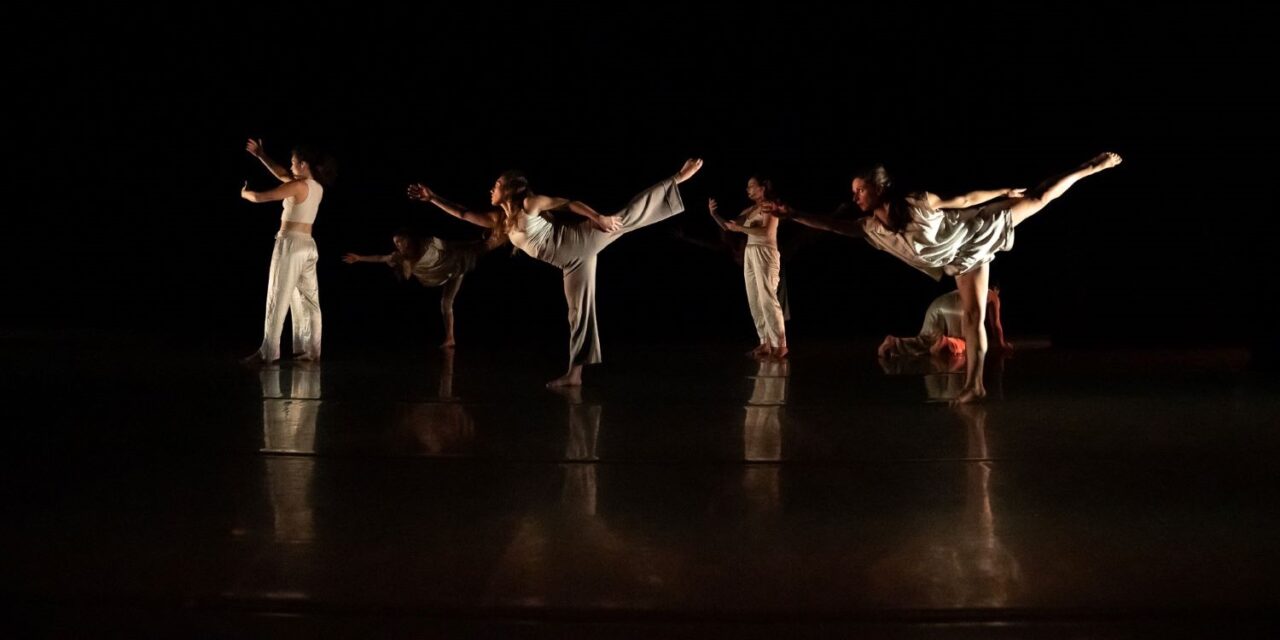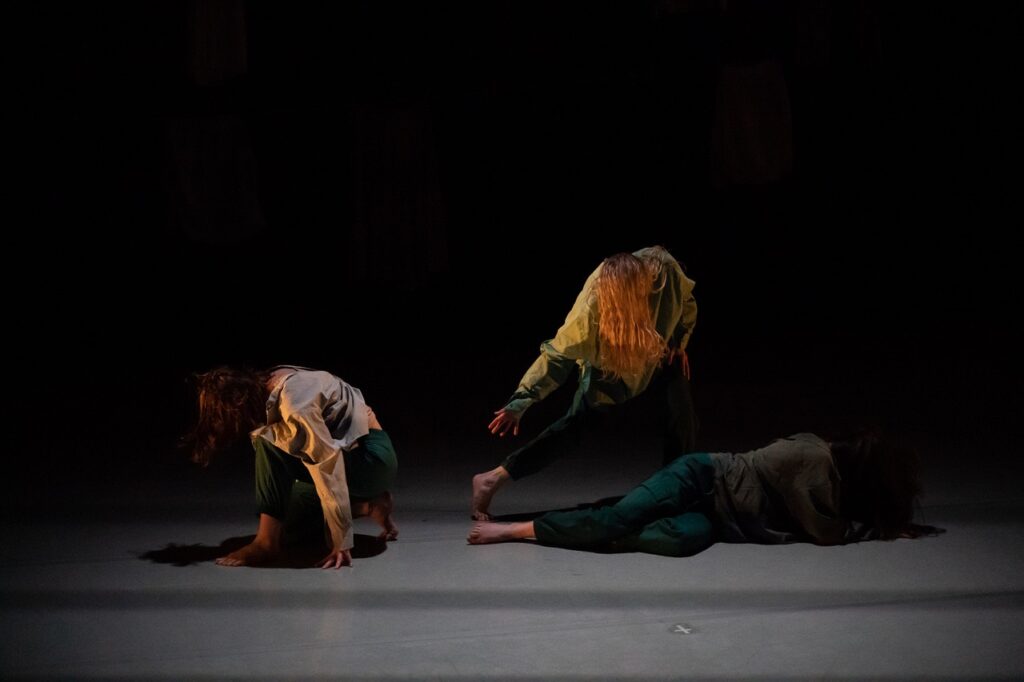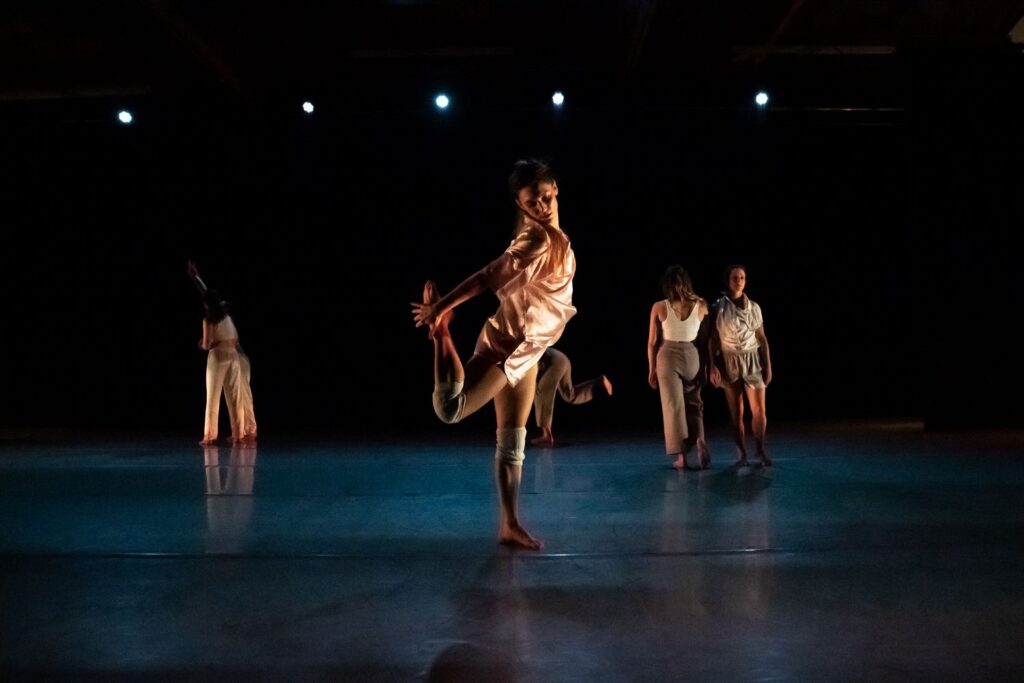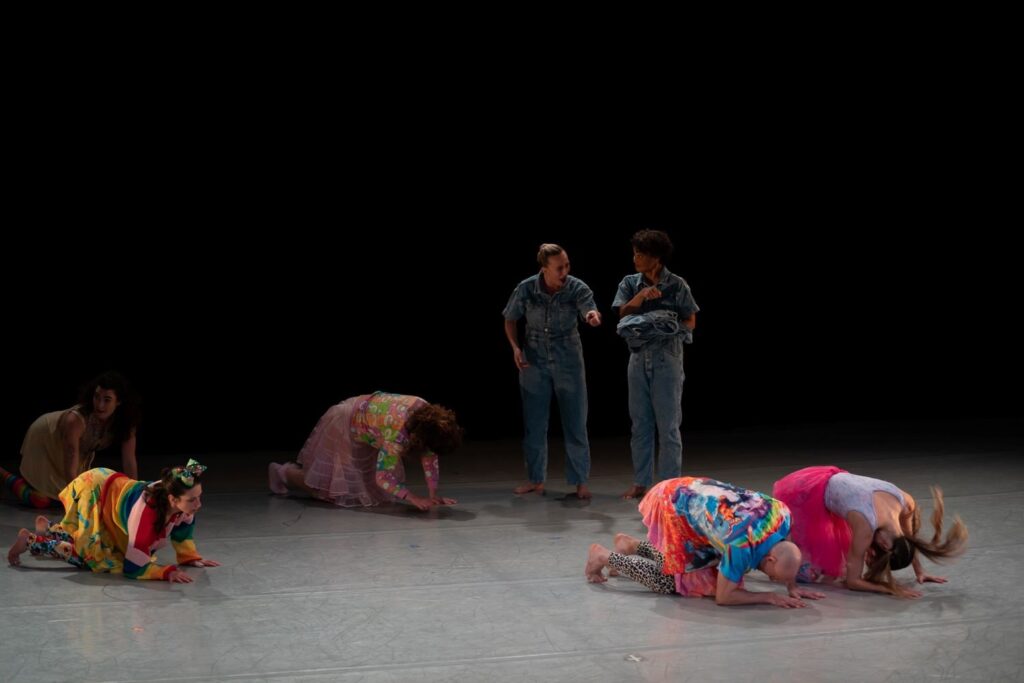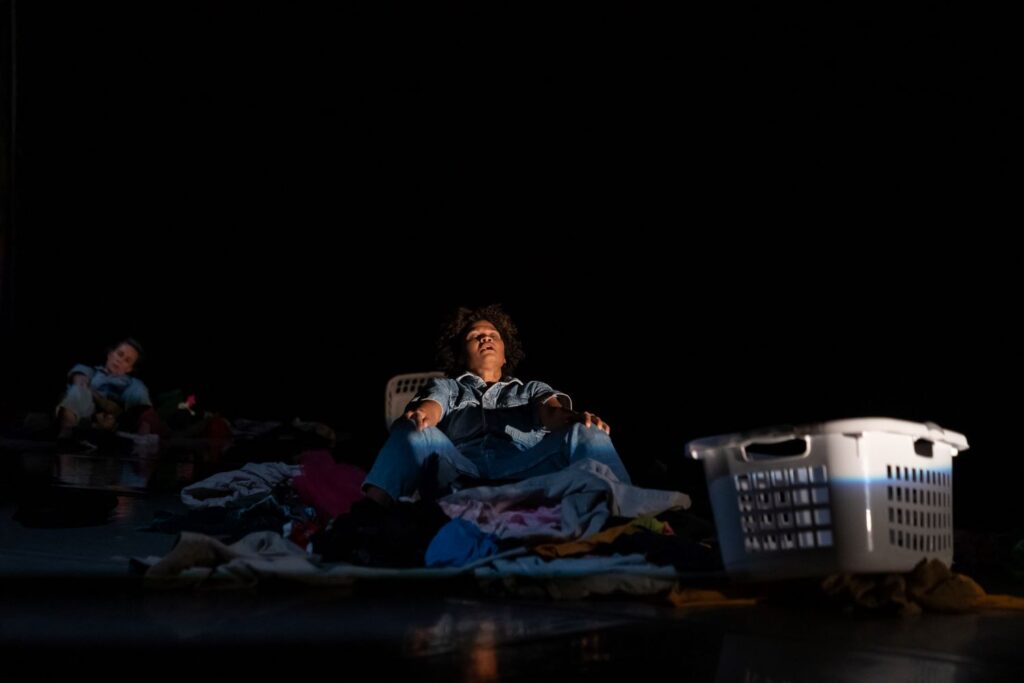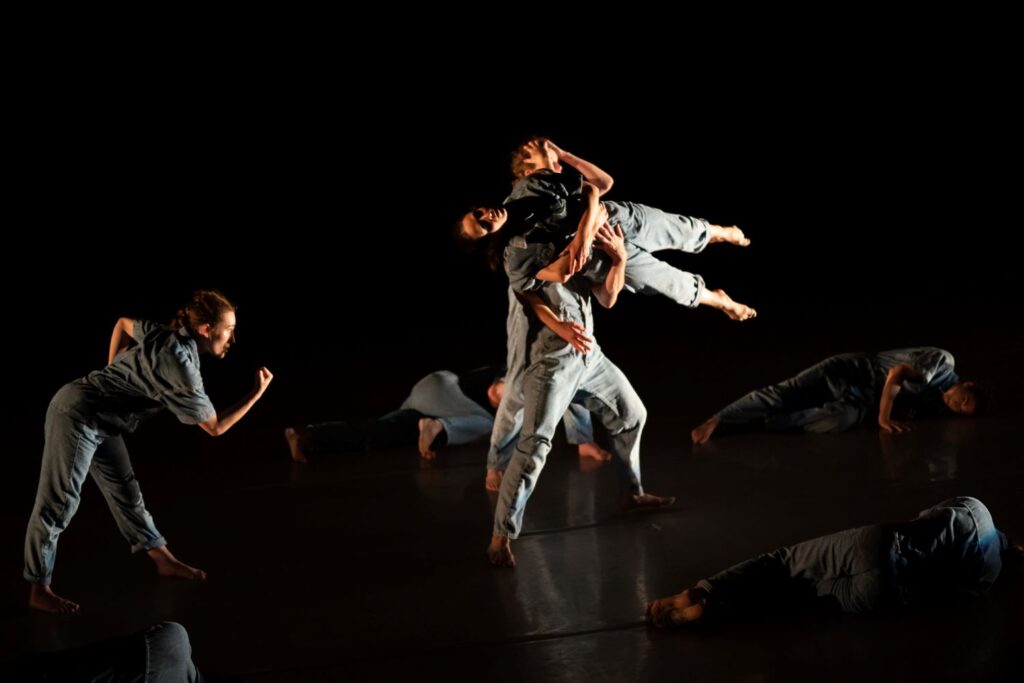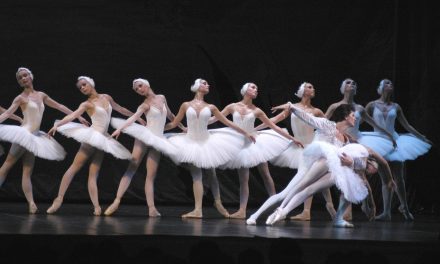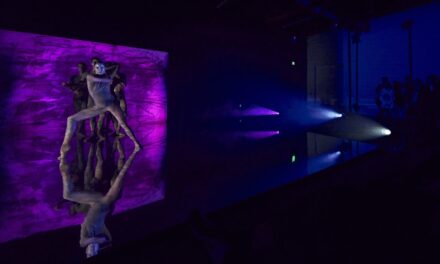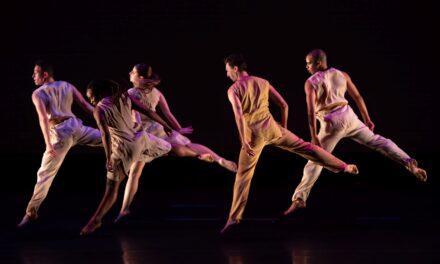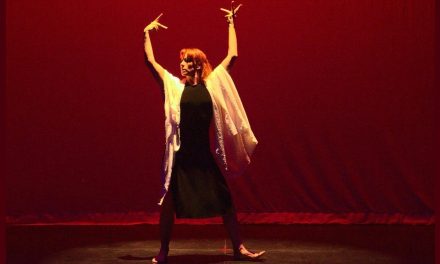Derion Loman/choreographer – “dirty laundry”
Appropriately the stage is set with two clotheslines hung across the backdrop from wing to wing. On these two clotheslines are various items of clothing, pants, skirts, shirts, etc. Whether or not they are dirty I cannot tell from my seat. There is one shirt laid out upon the ground stage center and this is where the first solo begins.
This piece was interesting as the subject matter Derion chose to investigate with these women was “Dirty Laundry” – a euphemism for dark, or nasty secrets, as well as a form of female drudgery for much of the 20th century. Even today many laundry detergent commercials are focused on female buyers. On the one hand, women doing laundry is ensconced in the collective psyche as a female task, done while the male ‘breadwinner’ of the 1950’s was at the office where he would ‘bring home the bacon’ to the ‘little wife’. All of it demeaning and antifeminist in the extreme. On the other hand, a piece about women handling laundry could embody the reappropriation of that activity to enable women to vent their fears, anxieties, and frustrations at their positions in society and also serve as commentary on their relationships with spouses and significant others.
Which was it? It may not be what the choreographer intended but it was both. One question which came up for me that could have shed a more feminist light on the proceedings was knowing just whose shirts the women were dancing with? Each dancer brought a shirt out with them which they tried on and danced with. At different points they handled the garment with great care and others, with turbulent rage and anger. Obviously commenting on their relationships with whomever embodied that shirt. In the end, it did not matter who the shirt belonged to as we were witness to the emotions released upon handling it.
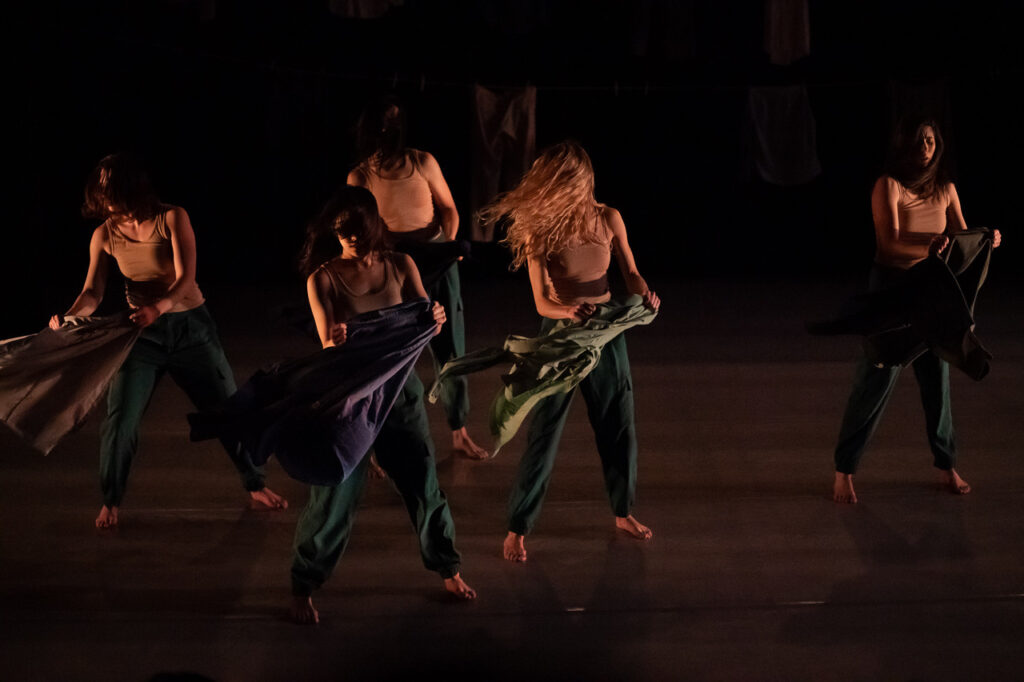
Dacia Biletnikoff, Anna Burke, Ashley Cook, Julia McCullock, Agata Grzelak in Derion Loman’s “Dirty Laundry” – Photo by John Suhar.
Much of the movement phrases were beautiful and lent gravity to the work, mirrored in the emotional angst that the laundry brought up in each woman. One of the thematic movements consisted of the women pulling their hair down in front, over their faces so that their features were obscured. They then shook their fingers through their hair as if the action would expel all turmoil and clear their heads. A move not unlike Mitzi Gaynor washing that man right out of her hair. Another section featured a woman screaming into her shirt in abject frustration. Was the person who wore that shirt dead? It seemed to be on a scale of that seriousness judging by the reactions of that performer.
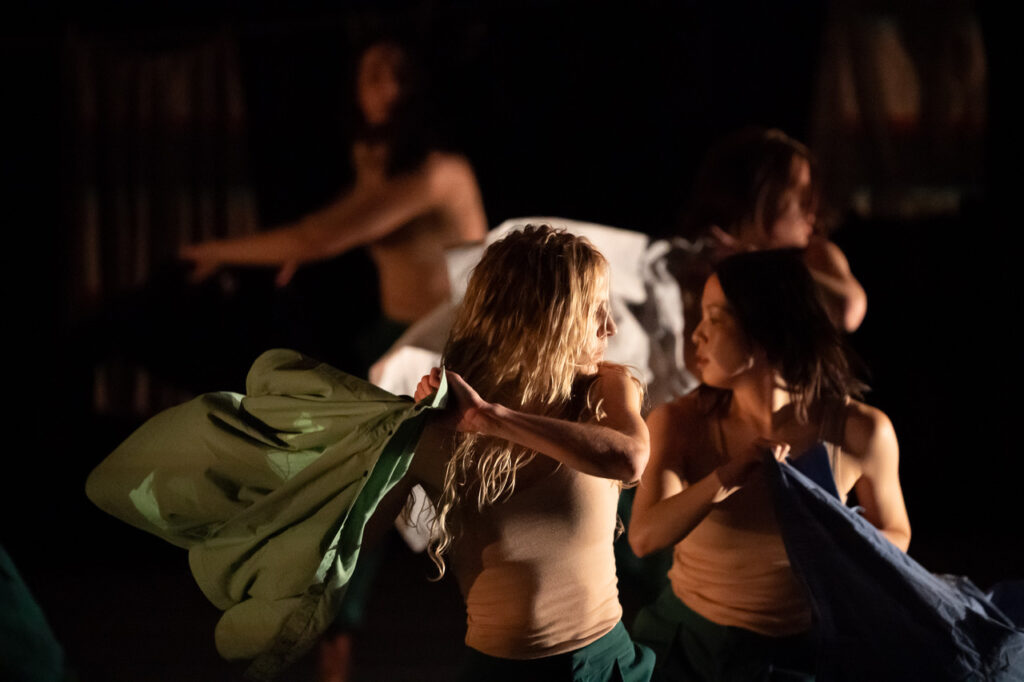
Front: Agata Grzelak, Ashley Cook – Background: Dacia Biletnikoff, Anna Burke in Derion Loman’s – “Dirty Laundry” – Photo by John Suhar
After the piece finished, I turned to the young woman next to me in the audience and asked for her opinion in order to balance my own. Her name was Rebecca, and she mirrored my thoughts exactly. I was surprised but happy that I was not alone in seeing the dichotomy of the work and perhaps that was the point. It did make the audience question – at least it made us question what the choreographer thought about the role of women and laundry, and the female society surrounding it.
Choreography: Derion Loman
Dancers: Ashley Cook, Julia McCullock, Dacia Biletnikoff, Agata Grzelak, and Anna Burke
Music: Ben Waters
Costumes: Amy Kubat & Derion Loman
********
Summation Dance Company, Taryn Vander Hoop/choreographer with contributions from the artists – “on our way home”
This was an evening length work “which investigates how capitalism lives in our bodies, from the intrusive thought patterns that consume us to the ways we conform to the systems in place.” The program lists three chapters to this work; 1. The Miracle – ostensibly the miracle of birth and consequently self-consciousness, 2. The fruits of your labor – illuminated the young adult’s desire to conform, fit in, belong, and the necessary lessons that entails while learning how large complex societies function, 3. On our way home – had to do with finding one’s own tribe, becoming independent, accepting one’s self.
The opening sequence had all dancers on the ground in flesh-colored costumes which read as naked and just born. Baby = naked = innocence. We follow the rise of self-awareness in these newbies until two ‘adults’ come in and dress one of them in a colorful play outfit. This newbie has graduated to ‘child’ and now must be acclimated to getting along with others and following rules. In other words, socially conditioned. All this to Pink Floyd’s “The Wall” – ‘we don’t need no education…’ This continues through adulthood in various ways and underlies how an individual may buck the system or attempt to remain untainted by societal rules.
Two adult women squat and give birth to oranges and then are regulated to forever cleaning up after their children. What happened to them as individuals? They have been subsumed by motherhood. Much of the movement was dynamic and powerful and carried the message of the piece clearly. The unison sections were clean and served to enforce the idea of conforming to a system of behavior favorable to the whole.
Towards the end the idea, or fear, of being alone becomes prevalent and is shown through a solo to spoken word about being alone. Then the soloist is joined by another and so does not fall prey to that particular fear. After that all of the dancers are with partners and no one is alone. They join together in a group and go off stage not in unison. Individuals with different experiences and values are moving in the same direction.
The ideas and themes of this show were clearly conveyed through the choreography and every aspect made comprehensible by the dancers. If anything, Summation Dance could benefit by a stronger eye towards editing. Keeping the main points tighter and moving on with the piece would have made a more concise statement and consequently a more powerful comment on how society insists on the conformity of its constituents.
Choreography: Taryn Vander Hoop
Dancers: Arletta Anderson, Kacie Boblitt, Cody Brunelle-Potter, Sumi Clements, Sadie Crystal, Emily Keller, Rosalynde LeBlanc, Derion Loman, Krystal Masteller, Alexandra Rix, and Taryn Vander Hoop
Music: Sleep Sounds (YouTube) edited by Adam Smith, What a Miracle by Hap Palmer, edited by Adam Smith, Another Brick in the Wall Pt 2 by Pink Floyd, Won’t be a thing to become by Colin Stetson & Sarah Neufeld, ideas, ideas, ideas!! by Malcolm Tulip, original composition by squash & biscuit, original composition by Malcolm Tulip, Shing Kee (1986) by Carl Stone
Costumes: Tammie Chavez & Leon Wiebers
To learn more about Summation Dance, please visit their website.
For more information about L.A. Dance Project, please visit their website.
To connect with Derion Loman, please click HERE.
This review was edited on 2/12/24 to correct a misquote.
Written by Brian Fretté for LA Dance Chronicle.
Featured Image: Sumation Dance in on my way home by Taryn Vander Hoop – Photo by John Suhar.

